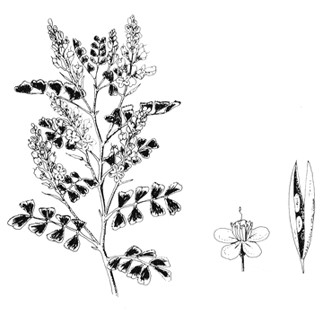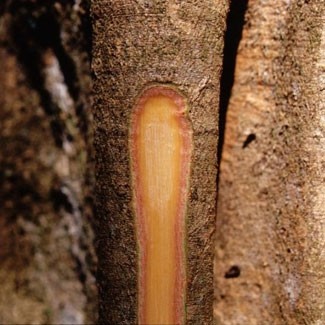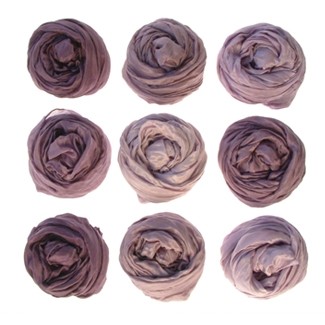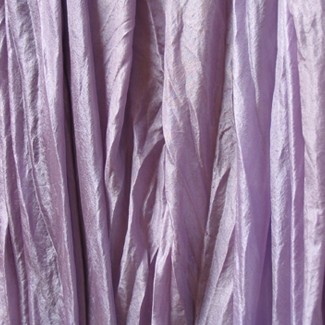| Logwood
Haematoxylon Campechianum L
The Plant
It is a Leguminous Cesalpinaceae in the shape of a large tortuous tree, reaching a height of 15 meters. The Latin name of this tree derives from the bay of Campeche in Mexico where it was discovered along the shore by the Spaniards in their first explorations; it was abundantly growing in numerous areas on the Atlantic coast of Central and South America.
It was scientifically cultivated in Jamaica in 1715 and then in other regions, for its wood that was very valuable for dyeing fabric in dark red or to produce black lacquer in combination with metallic salts. Logwood is one of the few natural products that has long resisted the assault of artificial colors, so much so that it has recently been used to dye nylon.
Logwood was imported to Europe in large stumps stripped of bark and the majority of its alburnum; these had a reddish brown and violaceous color in the part exposed to air, and much lighter on the cut.
In recent trading, many qualities that acquired the names of the countries of origin or ports of embarkation, are noted.
In ancient books on Italian dyeing the logwood was called legno tauro meaning bull wood.
Usage
The color is obtained by soaking the wood chips.
Color characteristics
Excellent resistance when washed in water.
Sensitive to light, with time it tends to lightly change, lowering tonality.
It is best to keep in a dark place when not worn.
Extremely sensitive to acidic substances like perfume,
food, beverages and perspiration.
If it should experience a change of color due to one of these events,
rinse well and leave it to soak in water with neutral detergent .
This procedure should have good results in getting the uniform color back.
Bibliography
Franco Brunello “ L’arte della tintura nella storia dell’umanità” Neri Pozza editore – Vicenza
The Plant
It is a Leguminous Cesalpinaceae in the shape of a large tortuous tree, reaching a height of 15 meters. The Latin name of this tree derives from the bay of Campeche in Mexico where it was discovered along the shore by the Spaniards in their first explorations; it was abundantly growing in numerous areas on the Atlantic coast of Central and South America.
It was scientifically cultivated in Jamaica in 1715 and then in other regions, for its wood that was very valuable for dyeing fabric in dark red or to produce black lacquer in combination with metallic salts. Logwood is one of the few natural products that has long resisted the assault of artificial colors, so much so that it has recently been used to dye nylon.
Logwood was imported to Europe in large stumps stripped of bark and the majority of its alburnum; these had a reddish brown and violaceous color in the part exposed to air, and much lighter on the cut.
In recent trading, many qualities that acquired the names of the countries of origin or ports of embarkation, are noted.
In ancient books on Italian dyeing the logwood was called legno tauro meaning bull wood.
Usage
The color is obtained by soaking the wood chips.
Color characteristics
Excellent resistance when washed in water.
Sensitive to light, with time it tends to lightly change, lowering tonality.
It is best to keep in a dark place when not worn.
Extremely sensitive to acidic substances like perfume,
food, beverages and perspiration.
If it should experience a change of color due to one of these events,
rinse well and leave it to soak in water with neutral detergent .
This procedure should have good results in getting the uniform color back.
Bibliography
Franco Brunello “ L’arte della tintura nella storia dell’umanità” Neri Pozza editore – Vicenza




